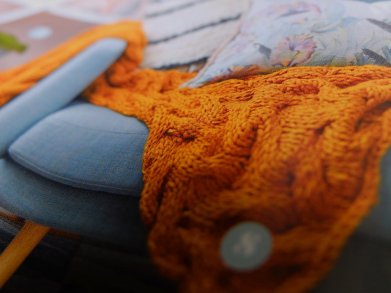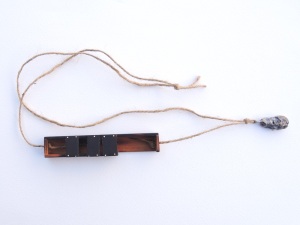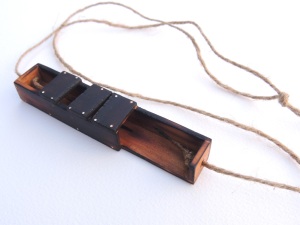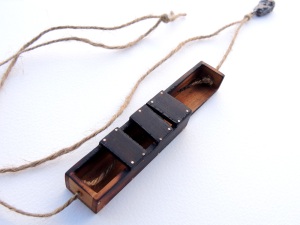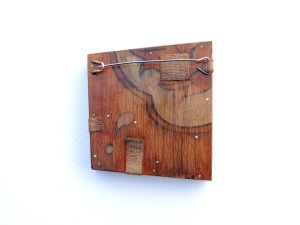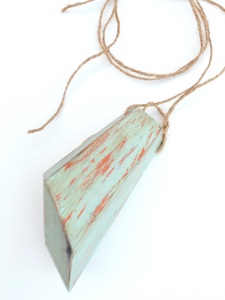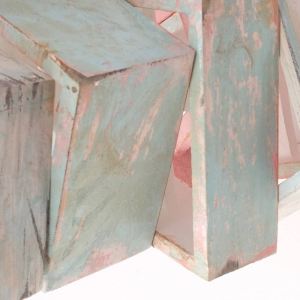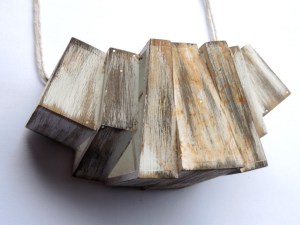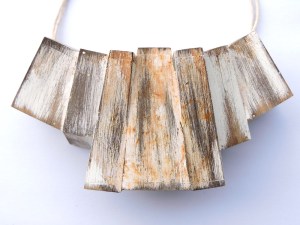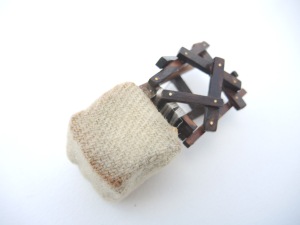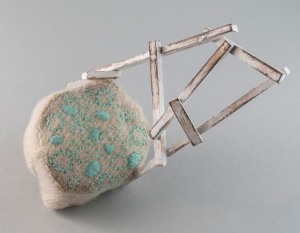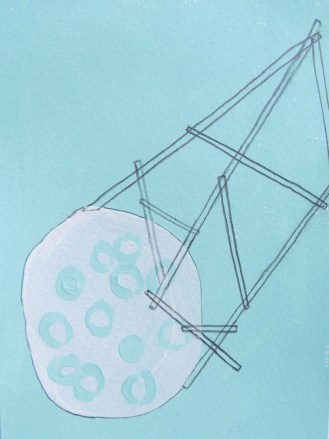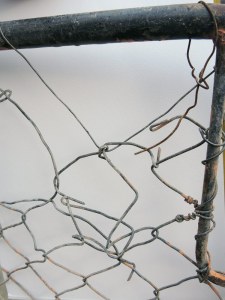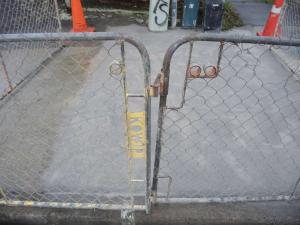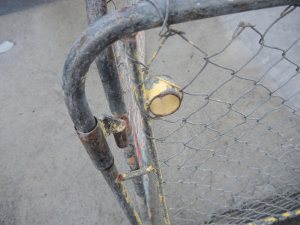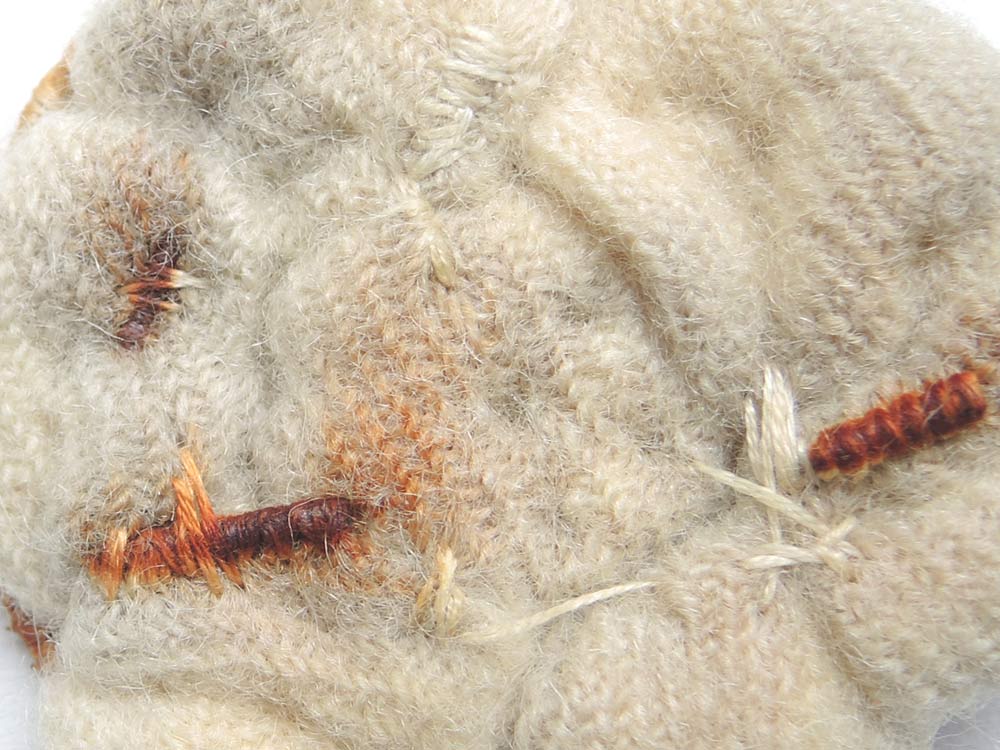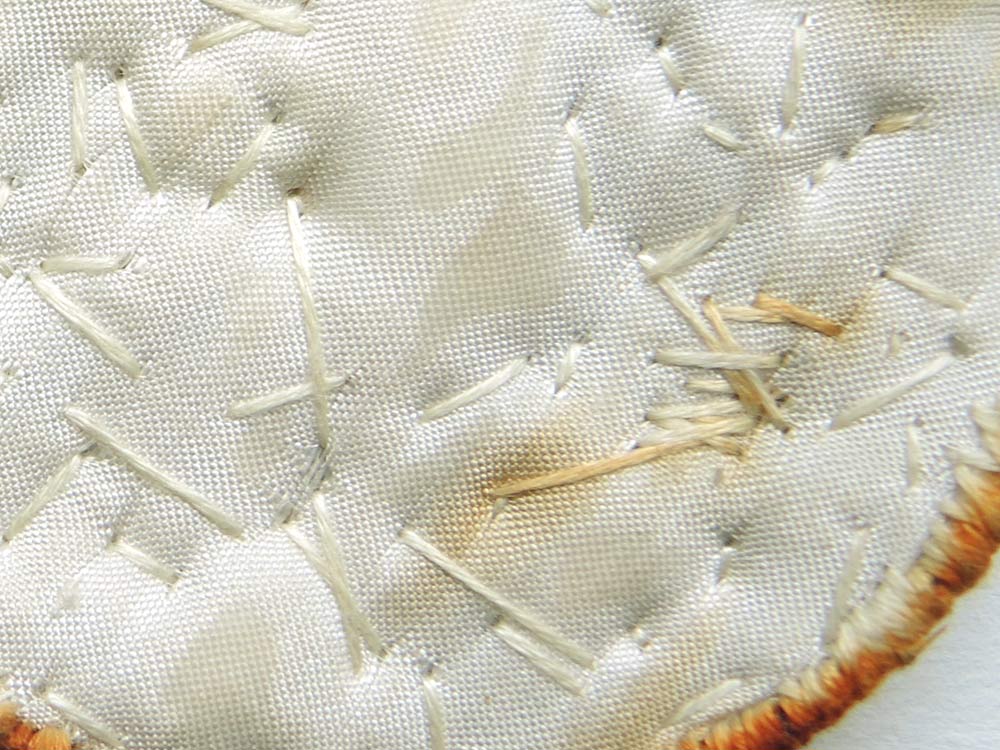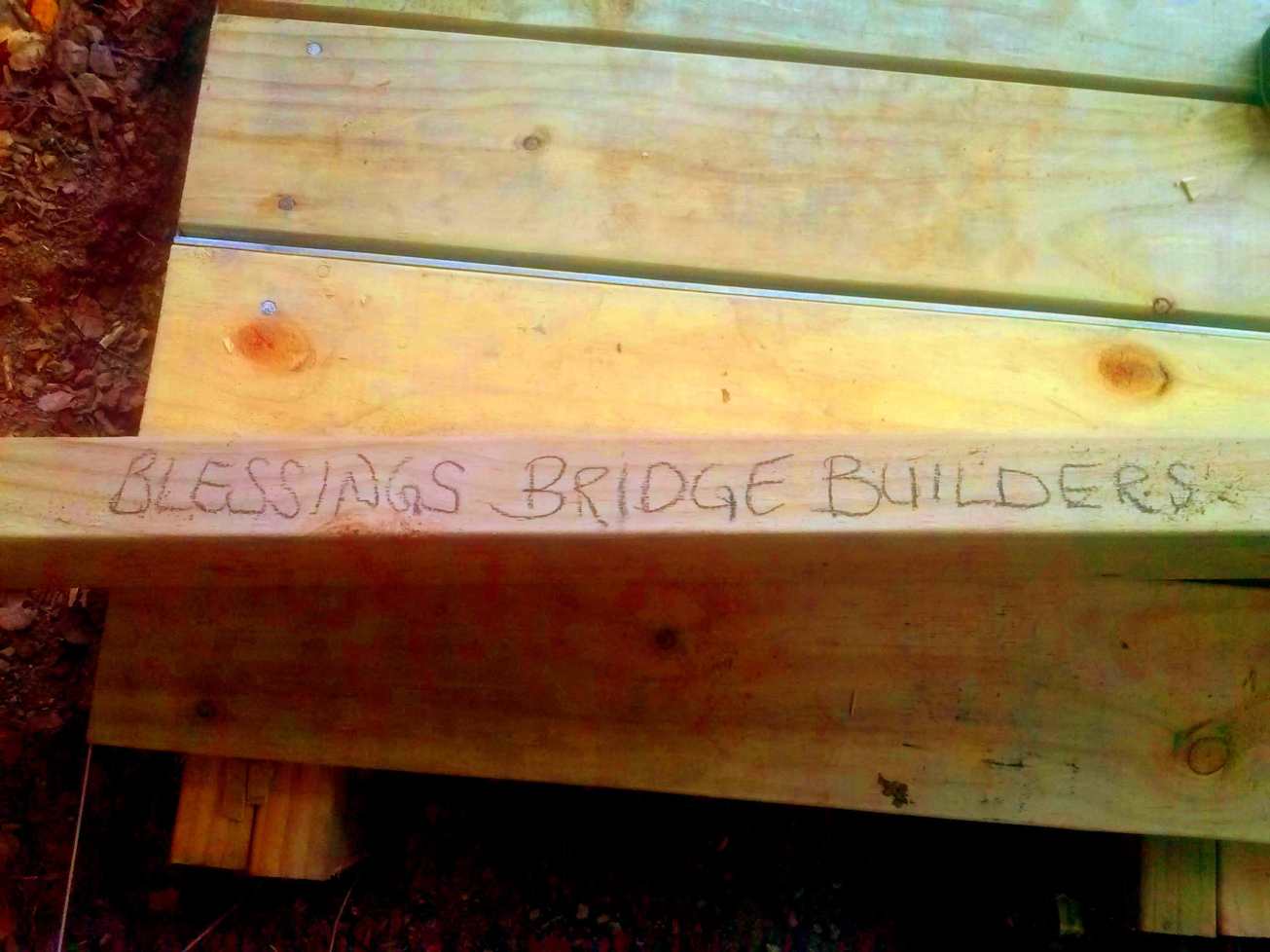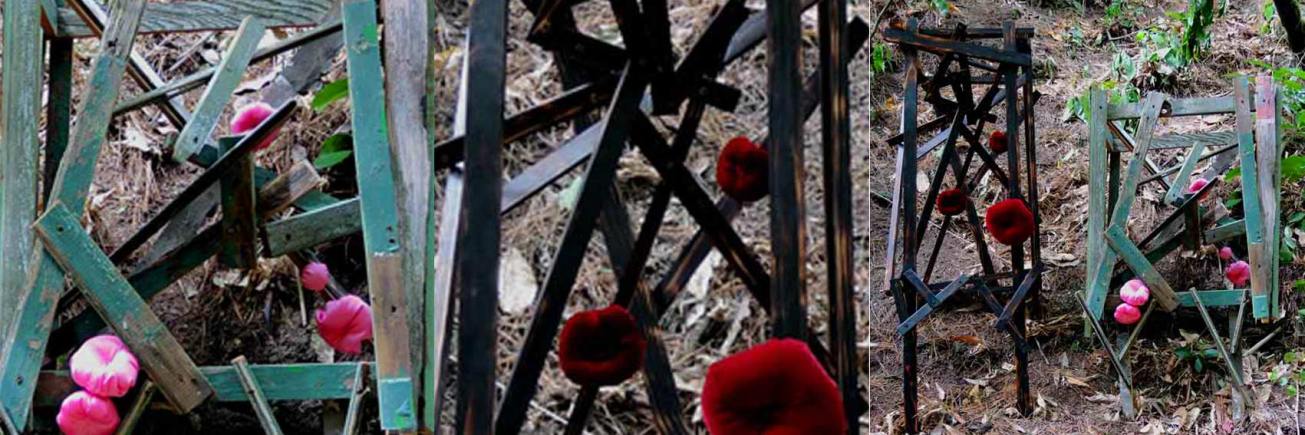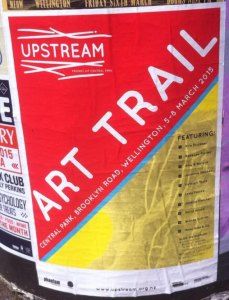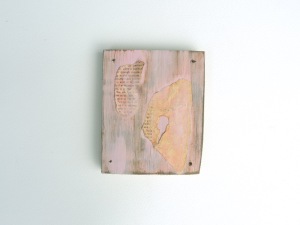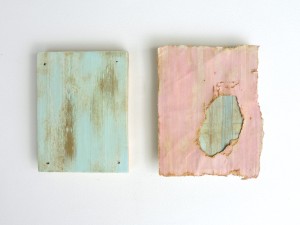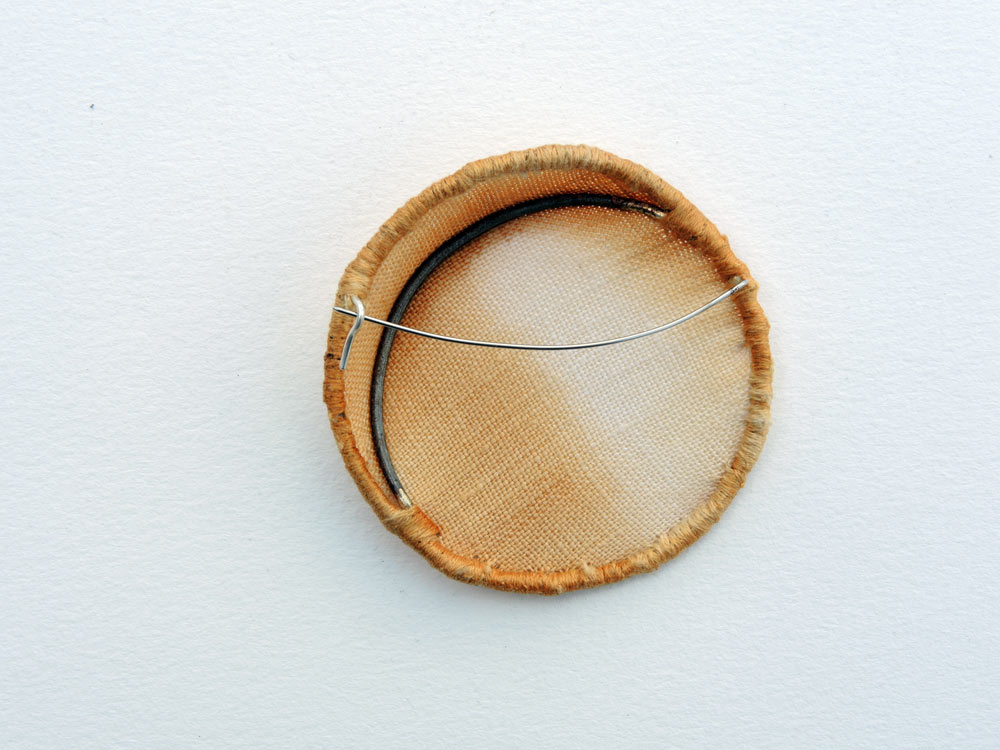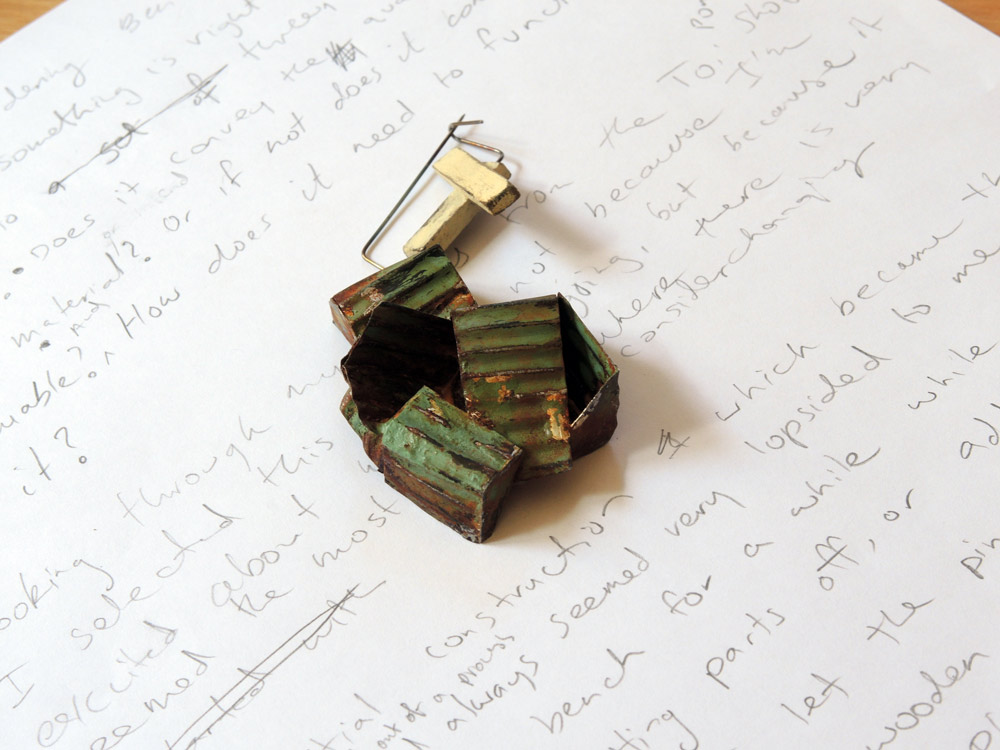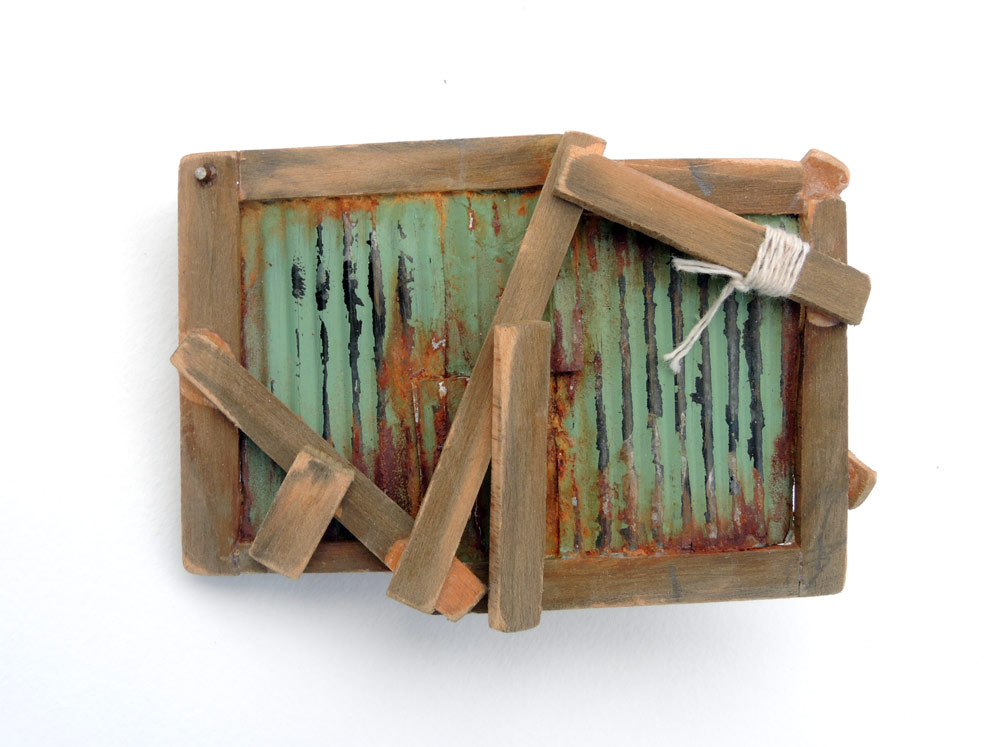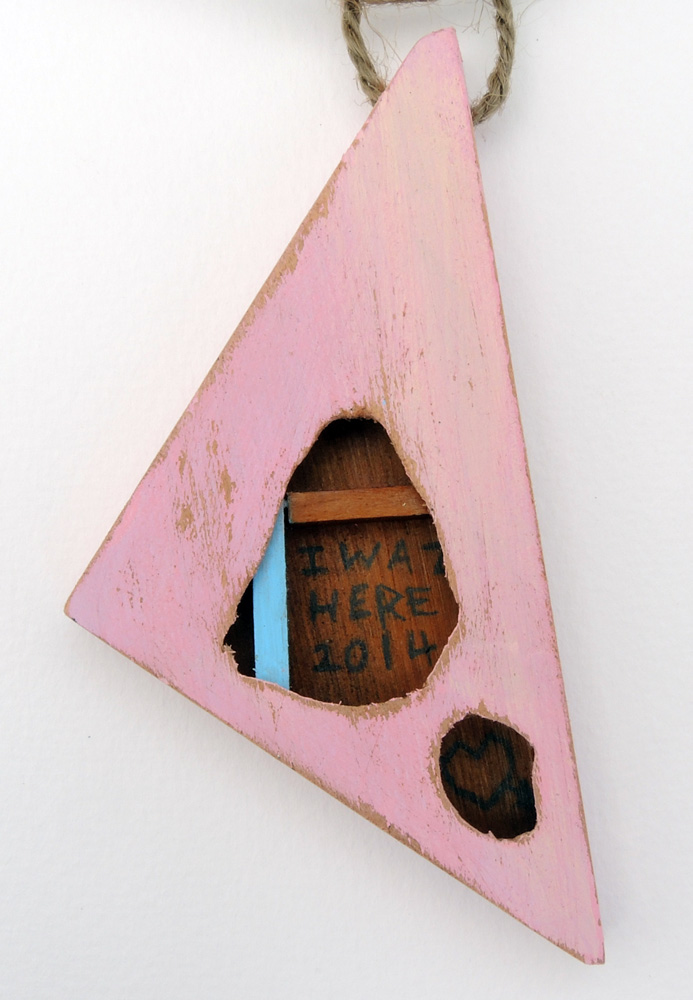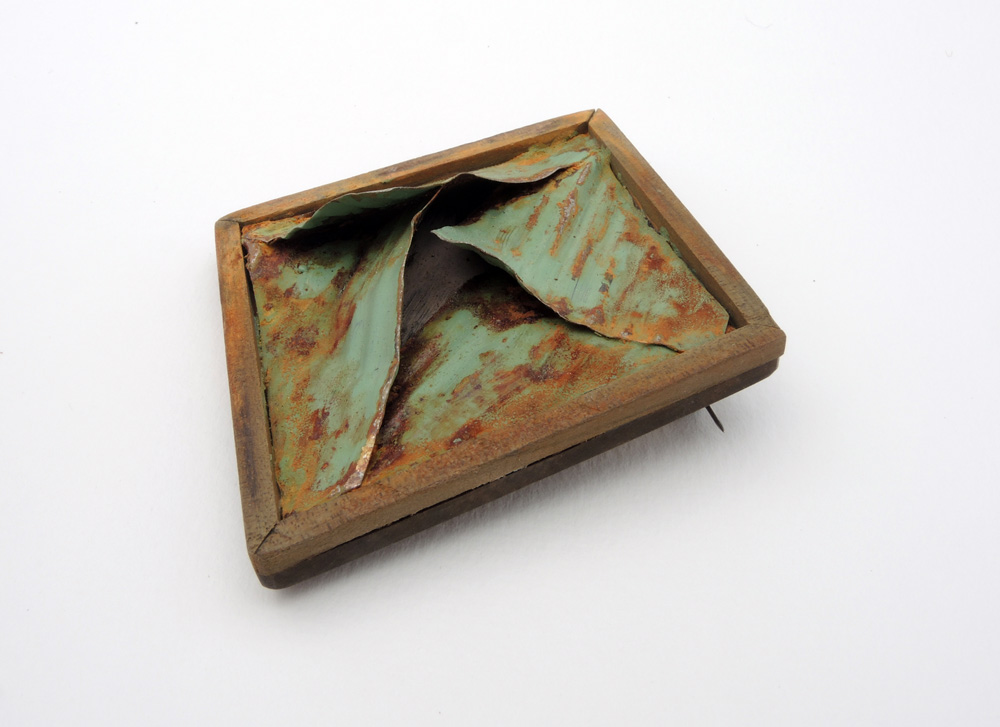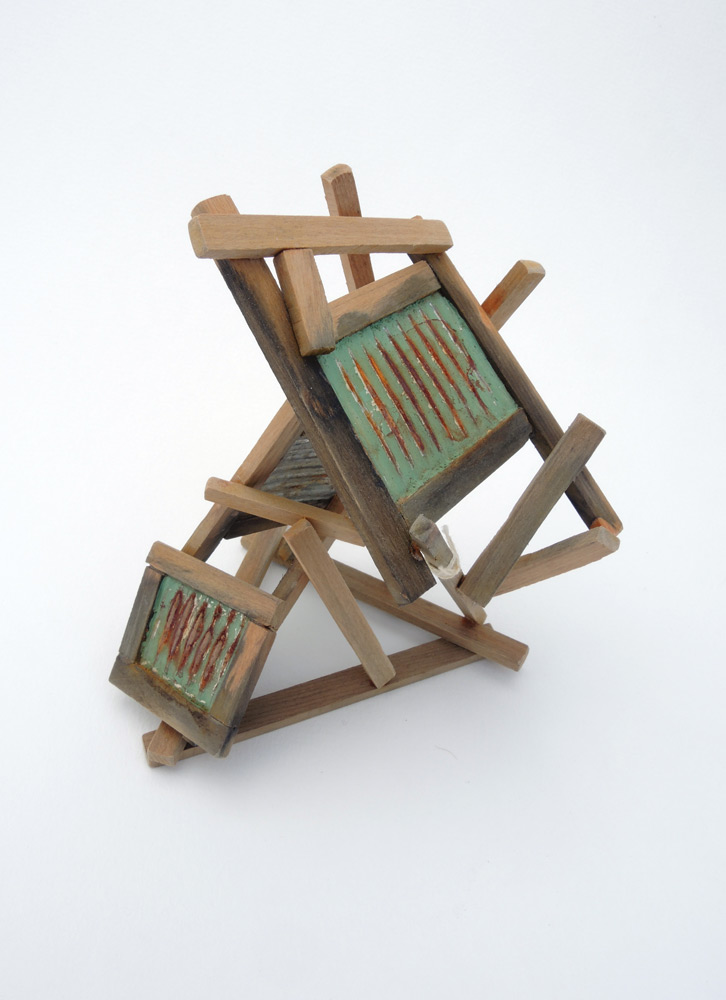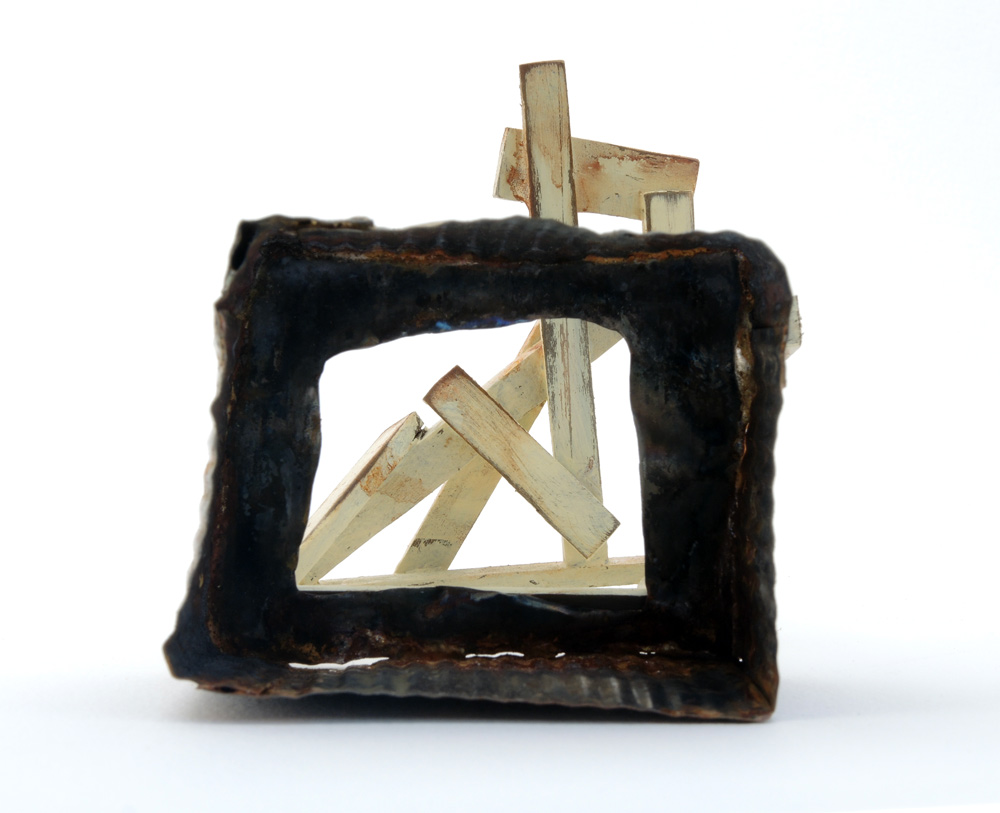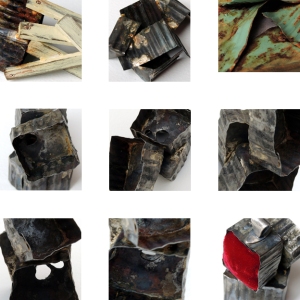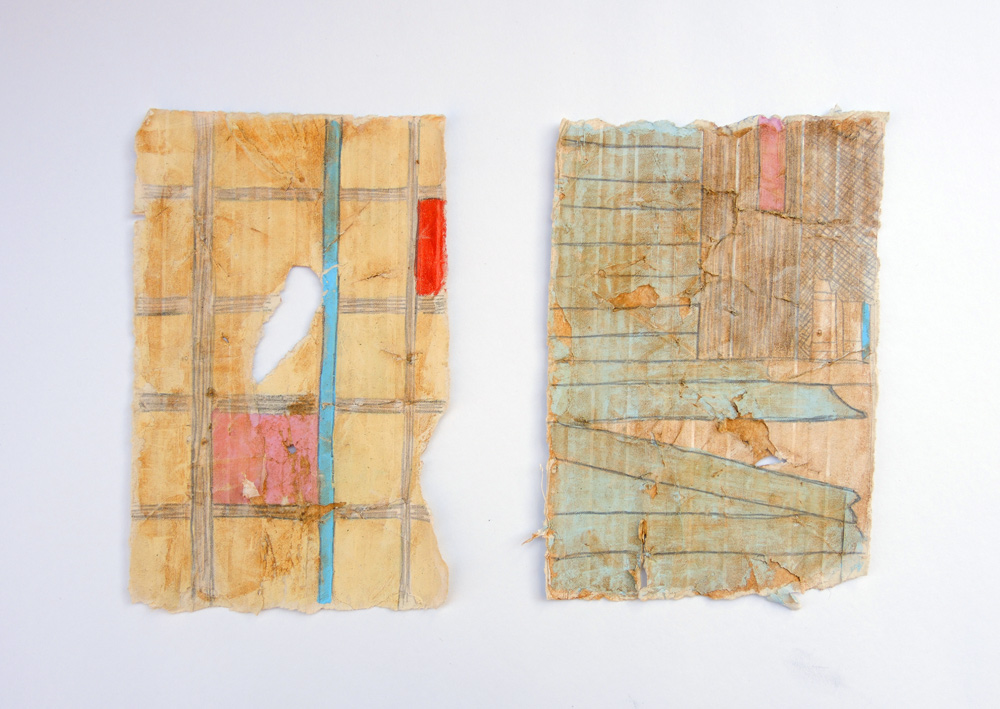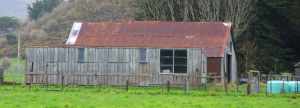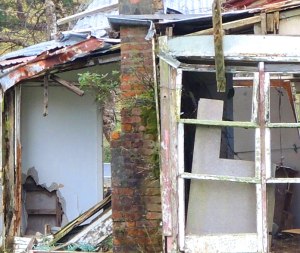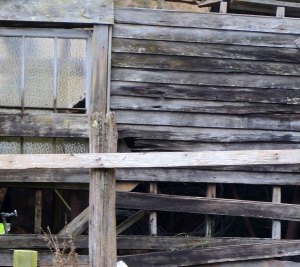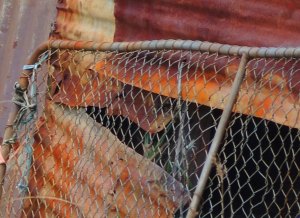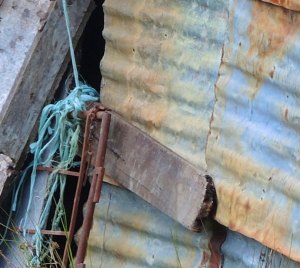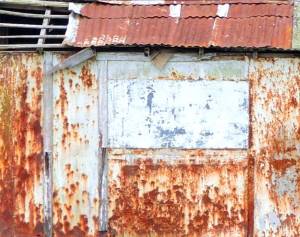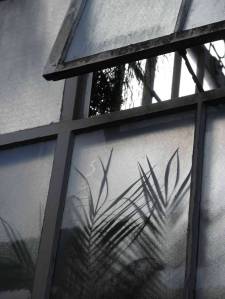20 December 2015
Reflections on Handshake 2
Handshake 2 has been a valuable experience for me, providing a space both to experiment and expand my practice and to consider and refine it.
Ben has been a great mentor and incredibly generous with his time. We tended to have expansive conversations, where I’d show him what I was working on, and he threw out other ideas, which might relate, or be an interesting tangent. He has been very insightful about where my work is going, always introducing me to new artists, and reminding me of artists I love and haven’t looked at in a while, which relate to my practice; I always felt very inspired when we talked, and keen to get back into the studio. It can be very isolating to work alone, and these conversations have been like sharing a studio again, not someone telling you what to do, but just taking the time to talk about work, and let the ideas settle and shift.
I’m looking forward to working collaboratively with Ben on the Handshake 3 projects, as well as focussing on developing my individual practice.
14 December 2015
Pah Homestead Exhibition
- Home
- Interior World Swatches
- 100% Pure Silk
- Plush
- Observed
30 November 2015
I was flicking through an article about developments in the Mate Retention Inventory, an instrument for researchers analysing various mate retention strategies in humans.
What drew my attention, as a jeweller, was the tactic Possessive Ornamentation, which included the acts Asked my partner to wear my ring and Gave my partner jewellery to signify she was taken.
It is interesting to consider the meaning, stories and functions of jewellery in other contexts.
Mate Retention Inventory (Short Form)
20 November 2015
Objects which I have made which I am not exhibiting…
for various reasons.
01 October 2015
Interior Worlds
Flicking through glossy home magazines.
12 September 2015
Notes from my notebook – September
Rather than architecture, my work for the Avid show focused more on domestic objects – the pencil box, string, boxes for storage, the backs of picture frames – things to be touched, the marks left on them. I’m enjoying the process of constructing everything with the tiny screws, it is more considered, meditative, and the results seemed stronger to me, less haphazard, though spontaneity can be beautiful too. Suddenly everything is much more durable, more wearable. I dropped pieces accidentally and they survived the impact intact. They are ready to have their own lives as jewellery, not just on the shelf. I’m quite pleased with the body of work, maybe it’s a little quiet and safe, but maybe it’s just that it is strange to me, this radical notion of jewellery you can actually wear.
The finish of one show always leaves the question, “Where to next?”
I have a few possible avenues in mind for my next body of work –
Focussing on the home and teasing out different aspects of domestic architecture – ideas like shelter, structure, warmth, comfort which could be explored by pulling apart my previous work to focus on just one aspect in each piece of jewellery. Narrow materials, narrow conceptual focus, to try and create a collection of quite disparate works which are then exhibited as a group – a non-matching group where the pieces can talk to each other, different colours, textures, materials and aspects of the home playing off each other.
Another aspect of the home could be capturing the essence of what is home, isolating the fundamental quality of what makes a domestic space a home, the comfort and security, and making pieces to carry that with you, a talisman of home. Or perhaps searching for the antithesis, the home without the aspect of safety, comfort and security, the absence of home. These stories could be exhibited on their own, or both together.
Continuing with the domestic object, is another option – looking at the points of interaction between humans and objects and focussing on that point of the objects – removing function, or making the function into how it is worn as jewellery, but preserving the touch aspect of objects.
Another aspect of architectures and objects which fascinates me is that which is hidden – the insides of walls, the layers of wallpaper or claddings, parts of buildings lying hidden and undisturbed and what may be imagined to be hiding there. Also the objects, boxes that open, hide things.
There are also a few techniques I’m interested in pursuing, flocking is one, and perhaps moulding timber constructions and casting with plaster resin or bronze…
Time to get back into the studio to play.
8 September 2015
New pieces for the Handshake 2 Show at Avid
Pencil Box Necklace
Burnt Pendant
Back Brooch
Fragments Brooch
Beads Necklace
Container Pendant
Enclose Pendant
The work for this exhibition is a development of my previous work, but focussed more on domestic objects rather than architecture. Small things to be held, boxes, pencil boxes, containers, focussing on wearing and interaction and on structures.
20 August 2015
New work on the bench for the show at Avid next month….
20 July 2015
I was never a diligent student at mandatory music lessons.
I like graphite scribbles, and little nibbles out of erasers.
Narrative objects.
8 July 2015
New work for the HANDSHAKE 2 exhibition at Stanley Street gallery.
This body of work is a continuation of work from the HANDSHAKE 2 exhibition last year at Toi Poneke. I worked by pulling out elements from pieces I liked, and trying to focus on just the part which I found most interesting; sometimes the next piece evolves in the same way from the last piece I did, sometimes I go back to the source material, but always trying to catch something essential.
These pieces are much stronger, fortified with their slender silver pins, I can drop them, and they survive, ready to have new lives, to wear new scars.
5 June 2015
1 June 2015
Drawing
25 May 2015
Drawings
15 May 2015
My timber constructions have always been built very quickly and intuitively using the very immediate method of joining the pieces with super-glue and hardener – there are so many possibilities, so many complex structures you can form when you don’t need to be able to clamp something in place while the glue dries. This is a playful and fun way to work, but one downside to it is that super-glue is very brittle and fractures easily. This makes the structures as fragile as they look, and they can only really be used for display, or as a very special ceremonial type piece for occasions where one is mostly sitting still. Probably very still…
I’ve tried coating the pieces with resin, but without using a very thick obvious coating, this didn’t seem to improve the overall strength of the pieces greatly, so I’ve been working on a new method of attachment using screws and PVA glue instead. This seems to make quite strong joins. It’s a much slower process, a more considered process. Each piece is shaped but neatly into its neighbour, hand-making tiny sterling silver screws to hold everything in place while the glue dries. It’s a very different way to work, no so playful, but I like it, the slow work of the hands. I will be interested to compare the outcome, to see how the work processes manifest themselves in the look of the object.
20 April 2015
I found this temporary fencing while walking.
I like the way the metal parts slot into each other, and the esoteric structures with their telescopic eyes intrigue me.
The paint is worn, flaking, the colours are warm on the cold metal.
Threads that enclose are pulled apart, there is escape.
7 April 2015
23 March 2015
My husband came to work today and found someone had climbed over the safety barriers and left a message for him.
I like that the secret message will get built into the bridge, and that it’s a slightly religious choice of phrase. Maybe someone will find the hidden text when the bridge is dismantled or repaired.
My friend was telling me that a friend of hers was stuck in a lift once and she opened the doors and wrote a story inside the lift shaft, between the floors.
5 March 2015
The work is installed, I’m largely pretty happy with – I think my first piece works better than I imagined in-situ – it melts right into the landscape with its natural colour palette, but is just irregular enough to be a little incongruous. I think the pieces fit in well with the rest of the works on the art trail – the bright coloured parts on works tie in with the beautiful fungus interventions popping out along the trail, and there are quite a number of works which with the architectural feel – the theme of the trail was shelter after all.
I think if I was going to make more sculptures, I’d try and stick to making them smaller and complex-little boxes to be peeked into, to spend time with details. I feel like they lose some of their intimacy being scaled up, but I’ve enjoyed the process, and it’s made me think about ways of joining my work to make them stronger, and more about my work in a particular environment. I have plenty ideas going out of this, and I’m fidgeting to get back into my studio.
1 March 2015
I’m working on sculptures for Upstream Central Park Art Trail. I’ve been working on them for some time, and I’m really not happy with how they’re looking. My first one seems very flat to me, and a little too rough all over, it doesn’t feel constructed enough, like there is too little human intervention. I’ve also made two sort of box structures, with a central cluster of timber pieces, I like the 3D nature of these constructions, the general feel of age in the painted piece, and the burnt finish on the one I have torched with my blow-torch, but they still feel a bit too homogenised, like they’re the same level of noisy and quiet all over, and somehow the volume needs to go up or down in some places, I’m just not feeling sure about anything.
I sleep. I step back and take a deep breath, and I imagine things growing out of the timber structures, bringing in the cyclic element from some of my other pieces – the timber burns or rots and decays, and something new grows out of it, maybe something soft, comforting, like home.
I look at the iron sheets on the other work, they’re all connected together and I experiment with pinning them down in different places to make the work more 3D and unexpected.
I think perhaps they need a tall skinny tower friend.
25 February 2015
It was suggested to me I might like to submit a proposal to make some larger versions of works from the Toi Poneke show for Upstream Central Park Sculpture Trail, in the 2015 Wellington Fringe Festival. My proposal was accepted, which is exciting, but creates some technical issues – my small scale works are held together with super glue and sterling silver pins, which aren’t going to translate into larger scale works. I try replacing this with PVA and nails, which works with the neat right angle butt joins, but not for the irregular and angled joins which are more usual in my pieces. I settle on self-tapping screws which seem to hold things together however I place them. I initially intend to make my work quite small, kind of birdhouse scale, but somehow they keep creeping bigger…
Drawings
23 February 2015

This is the brooch that I made for the “make one piece at a time” challenge. I wanted to develop on a piece I had made earlier (below) and make a piece which concentrated on the point where the metal pushes against the fabric. For some reason the rust has spread out in the new brooch, rather than being concentrated around the edges, so it has a much softer appearance than the original piece – all part of the adventure of working with processes you can’t completely control.

12 February 2015
11 February 2015
Kelly McDonald and I discuss our habit of working on many pieces at the same time. We resolve to both make one piece from start to finish. An experiment to see how this affects the outcome of our process, the contrast between the random connections of working in a scattered way on many different things, and the linear progression of working in an ordered way from start to finish…
Results here soon, watch this space.
10 February 2015 – Workshop with Benjamin Lignel
This week we have been participating in workshops with Benjamin Lignel, analysing our practice and process, and discussing various aspects of exhibiting our work.
We were asked to give a brief pitch about a work of ours we felt was resolved, and here is how I feel about this piece today –
Last night I was considering Ben [Lignel]’s question “How do you know if something is right?” and I’ve refined this into three sets of questions :
- Is it balanced?
- Does it convey the quality of the inspiration material? Or if not, does it convey something else valuable?
- How does it need to function? And does it?
Looking through the pieces from the Toi Poneke show, I selected this brooch, not because I’m excited about where it’s going, but because it seemed the most finished, where there is very little I’d consider changing about it.
The initial construction which became this brooch evolved out of an arbitrary construction process. It had always seemed very lopsided to me, and sat on my bench for a while while I considered cutting parts off, or adding parts on. In the end I let the pin show on the front, adding the wooden element to balance the form, without forcing it into a regular shape. It feels found to me, and I like that it came to my bench as shiny new materials, but left it carrying time with it. I find the collapsing chaos of my source material, it rusts, it falls apart, it returns back to the land, it is disused, it is home, it is shelter. The pin is a quick #8 fencing wire hack, in keeping with the other element. And the brooch functions. It’s reasonably easy to pin on, and the pin can hold the work securely. And if it rusts onto your outfit, well, that’s all part of the story.
21 November 2014
17 November 2014
Show at Toi Poneke –
It is time now to start installing the work for the exhibition at Toi Poneke – it’s like a slice from an ongoing series, I am still too involved to really make decisions about what work to keep, and what work to edit out. I remove one piece which seems unfinished, but otherwise leave everything in. My display ends up shorter than I had imagined, for practical reasons. It is suggested maybe my shelf could go on the wall, but I am adamant that it is very important the pieces can be viewed from all sides, and must be on a table, or as I concede, hung from the ceiling on a floating shelf is fine. I ponder if my work is too squashed, in some ways I like the busy miniature world – peering into all the pieces, but also the work needs space to breathe. In the end, I just can’t decide what to take out, so it all stays. A record of where I am in the process of making, diverging into different directions and experiments.
IV. Writing
III. Experiments
II. Preparation
I. Photographs
14 October 2014
Ben suggests I look at the work of furniture designer Maarten Baas. I fall instantly in love with his smoke series, and I want one for my home. I get as far as researching price and availability, they are really sexy pieces of furniture. I’m saving up… Probably just for one of the reproduction pieces, partly since I imagine the ones made from burning actual antique, or classic design pieces of furniture would be somewhat more expensive, but also I’m a little uncomfortable at the thought of it – I’m more interested in the imagined found, I can’t treat objects with such irreverence, though I’m almost impressed when other people can.
In addition to the smoke series, he has also produced furniture hand wrapped in clay. Looking completely different, these pieces are also very alluring to me. To begin with something mass produced, and then allow the process to shape each into something individual, to breathe life into the handmade, as can be found in a piece of handmade earthenware for instance. Both the pieces in the clay series and the smoke series have been touched and leave a record, either of how they are lovingly formed, or of the trauma they have endured.
15 September 2014
Drawings –
Email to Ben, 9 September 2014
The photographs of the decaying buildings near where I live.
Excerpts from email to Ben, 2 September 2014
I’ve been considering what material I might use as base for developing my new work for this exhibition, as you suggested.
I started checking out abandoned building pictures, which is of course a massively intriguing way to waste many, many hours. There are plenty of amazing looking examples of these, particularly around Detroit post-economic collapse, and Pripyat in the Ukraine, which was abandoned due to the Chernobyl disaster. But I’m kind of reluctant to draw too much from these images, since the images already very beautiful and haunting and I don’t particularly have a connection with any of the places to begin with.
Considered also abandoned asylums, which is better since it connects to a more universal narrative about how we treat and have treated people with mental health issues, but I feel like that would require a bit too much research for an exhibition in November. Or perhaps the abandoned observatories, which I like the idea of using as a source to make small objects, sort of the connection between what you can hold in your hands, and the infiniteness of space… Still, feeling a more wide ranging narrative is probably a bit big for such a small time scale until the work needs to be exhibited.
So to narrow the search for architecture down, I’m considering abandoned buildings around New Zealand. I love driving around and seeing all of those abandoned (or at least very in need to maintenance) farm houses and barns collapsing into the landscape, and I can collect plenty of images to work from of these fairly easily.
This is a particularly cool one at Ponatahi, opposite Stonehenge Aotearoa. (I have only seen it from a distance since when we were last up that way we had the kids with us, and we thought it would set a bad example for them if we trespassed on the property to get a better look.)
I like the idea of working further on the box necklace type structure, making it a bit larger, but preserving the little areas you can turn around the see the interiors of parts. So I’ve been considering places which might be abandoned that you can get into the interior of, maybe glasshouses, playgrounds with forts, band rotunda. So I took a couple of photographs of the glasshouses and band rotunda in the Auckland Domain when I was up there-
But I think I gravitate more towards domestic interiors, because the fact they’re private spaces interests me, so that doesn’t allow much getting inside with my camera, with the exception of historic places trust type buildings. So I think it is also going to be important to gather some material on what the New Zealand domestic interior looks like. Also considering domestic interior spaces are a site where some of the textile elements I’m interested in would not sit incongruously with the wooden structures. I am quite fascinated with domestic interiors where people have layered up wallpaper, so the record of the previous decorations is preserved underneath, a bit of urban archaeology. Also just generally the redecorating and renovations of rooms so that that particular space has existed in different iterations, with different owners, and perhaps different functions.
So, so far the plan is to collect images of domestic buildings in New Zealand – I have been saving some images from the National Library for historic interiors. I’ve found lots of black and white images from the late 19th, early 20th century in their online collections and there seems to be some home and garden periodicals I can probably get out to cover the mid-20th century, and I will pick up some contemporary house and garden magazines. I still want to keep the feeling of abandonment and dilapidatedness, at least in parts, but I want that to happen naturally by how the object is treated. Also need to look into the exterior parts, taking photographs and collecting some images of historic domestic buildings, and also from the house and garden type magazines. So I need to collect that, sort through it and pick out maybe one or two images which typify each era to make some drawings and small trial pieces from, before I commit to working on something larger which will take more hours of work.
Well, that was quite helpful to sort of solidify my thought process, feel free to suggest anything, and otherwise I will get to making some test pieces in the next week or so…
abandon
Pronunciation: /əˈband(ə)n /
VERB:
- Cease to support or look after (someone); desert.
1.1 Leave (a place or vehicle) empty or uninhabited, without intending to return.
1.2 (abandon someone/thing to) Condemn someone or something to (a specified fate) by ceasing to take an interest in them.
- Give up completely (a practice or a course of action).
2.1 Discontinue (a scheduled event) before completion.
- (abandon oneself to) Allow oneself to indulge in (a desire or impulse).
NOUN:
- Complete lack of inhibition or restraint.
25 August 2014
First Skype with Ben. Terrified. Generally am to meet new people anyway, but also a little daunted by the technology. Pretty sure video phones were some kind of crazy sci-fi imaginary tech not that long ago. Still, I’ve adjusted to the vast, looming presence of the Internet, so I expect I’ll cope with this. Also weighed down by the gravity of the gift of time and energy devoted to facilitate this project. I have a lot of work to do to return that energy.
I’ve been spending time with some of my work, considering what direction my new pieces might go in.
Find terror is unfounded, and conversation flows easily, full of intersections and points of meeting. Ben suggests I find something concrete, a kind of object or space, or type of these to base my new body of work on, which seems a good way to rein in my scattered tendencies. Ben suggests I read the Poetics of Space by Gaston Bachelard.
















